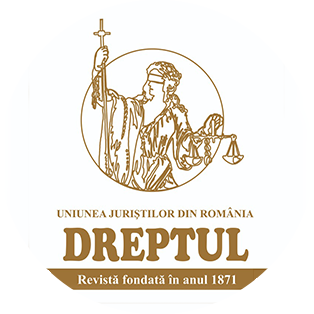-
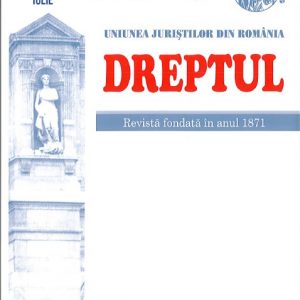 The rule of issuing urban planning permits (building or demolition permits) under the reserve of respecting the civil rights of third parties has two important consequences. First, it makes it clear that this sort of administrative permit does not affect the rights of the third parties; second, it means that the subsequent civil right is not taken into consideration in the management of the file and the issuing of the permits. The said permits solely assure the respect of urban planning law, excluding private law obligations and servitudes.
The rule of issuing urban planning permits (building or demolition permits) under the reserve of respecting the civil rights of third parties has two important consequences. First, it makes it clear that this sort of administrative permit does not affect the rights of the third parties; second, it means that the subsequent civil right is not taken into consideration in the management of the file and the issuing of the permits. The said permits solely assure the respect of urban planning law, excluding private law obligations and servitudes. -
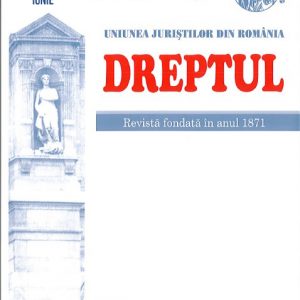 The civil liability of judges and prosecutors for damages caused by torts related to their professional duties is a subject of actuality much debated by legal professionals, the media and the civil society as a whole. Problems such as judicial errors, arrest followed by exculpatory decisions, controls and other forms of discriminatory police abuse performed sometimes at the request of prosecutors are just some of the examples observed by many contemporary societies as dangers for the human rights and liberties. The constitutions, laws and case law provide for answers to the questions in connection with the tort liability of judges and prosecutors. Latest, it becomes visible worldwide a certain way of thinking which advocates for more restrictive rules regarding the subject. This phenomenon is noticeable not only in Romania but also in other countries, such as the United States and France. The paper proposes a synthesis of the constitutional, legal framework and case law in the United States of America, with a special focus on the Supreme Court of Justice cases regarding the civil liability of judges and prosecutors. Since the notions of absolute immunity and qualified immunity in this context are quite unknown to the Romanian legal readers, this paper should add some value to their knowledge of the way of thinking the relation between independence versus accountability of the judiciary specific to the legal traditions of the U.S. From the perspective of the U.S. case law, the paper presents some of the most relevant cases of the Supreme Court of Justice such as: Stump v. Sparkman, Griffith v. Slinkard, Yaselli v. Goff, Imbler v. Pachtman, Burns v. Reed and Buckley v. Fitzsimmons. Although quite old some of them, the majority of the conclusions resulted from this case law are still valid today, with nuances, mainly in the area of the qualified immunity for prosecutors.
The civil liability of judges and prosecutors for damages caused by torts related to their professional duties is a subject of actuality much debated by legal professionals, the media and the civil society as a whole. Problems such as judicial errors, arrest followed by exculpatory decisions, controls and other forms of discriminatory police abuse performed sometimes at the request of prosecutors are just some of the examples observed by many contemporary societies as dangers for the human rights and liberties. The constitutions, laws and case law provide for answers to the questions in connection with the tort liability of judges and prosecutors. Latest, it becomes visible worldwide a certain way of thinking which advocates for more restrictive rules regarding the subject. This phenomenon is noticeable not only in Romania but also in other countries, such as the United States and France. The paper proposes a synthesis of the constitutional, legal framework and case law in the United States of America, with a special focus on the Supreme Court of Justice cases regarding the civil liability of judges and prosecutors. Since the notions of absolute immunity and qualified immunity in this context are quite unknown to the Romanian legal readers, this paper should add some value to their knowledge of the way of thinking the relation between independence versus accountability of the judiciary specific to the legal traditions of the U.S. From the perspective of the U.S. case law, the paper presents some of the most relevant cases of the Supreme Court of Justice such as: Stump v. Sparkman, Griffith v. Slinkard, Yaselli v. Goff, Imbler v. Pachtman, Burns v. Reed and Buckley v. Fitzsimmons. Although quite old some of them, the majority of the conclusions resulted from this case law are still valid today, with nuances, mainly in the area of the qualified immunity for prosecutors. -
 At the beginning of this study, the author makes an exposition of the economic and contractual environment whose needs have determined the necessity of recognition by the legal doctrine and by the case law and then the legislative consecration of the existence of a general obligation of pre-contractual information as duty of the participants in the civil circuit. The legal basis for this obligation has been found and discovered, by way of interpretation, in the texts of the Civil Code that establish the principle of good faith in the negotiation, conclusion and execution of contracts. The author also points out that there are numerous provisions mostly in the legislation connected to the Civil Code, which pertains to the consumption law, where there are regulated specifically and in detail various obligations of pre-contractual information, in the matter of contracts concluded between professionals and consumers. In this context, it is also established the existence in the special legislation of what the legal doctrine calls „informative formalism”, which means that upon the conclusion of some contracts, where the law expressly provides so, the information which the professionals are required to provide to the contractual partners must take a certain form, which most often is the written form; the failure to comply with the requirements of informative formalism can lead to various sanctions, some of them administrative or contraventional and others of private law. The study concludes with an overview on the private law sanctions which can intervene in case of failure to perform or of the improper performance of the general obligation of pre-contractual information.
At the beginning of this study, the author makes an exposition of the economic and contractual environment whose needs have determined the necessity of recognition by the legal doctrine and by the case law and then the legislative consecration of the existence of a general obligation of pre-contractual information as duty of the participants in the civil circuit. The legal basis for this obligation has been found and discovered, by way of interpretation, in the texts of the Civil Code that establish the principle of good faith in the negotiation, conclusion and execution of contracts. The author also points out that there are numerous provisions mostly in the legislation connected to the Civil Code, which pertains to the consumption law, where there are regulated specifically and in detail various obligations of pre-contractual information, in the matter of contracts concluded between professionals and consumers. In this context, it is also established the existence in the special legislation of what the legal doctrine calls „informative formalism”, which means that upon the conclusion of some contracts, where the law expressly provides so, the information which the professionals are required to provide to the contractual partners must take a certain form, which most often is the written form; the failure to comply with the requirements of informative formalism can lead to various sanctions, some of them administrative or contraventional and others of private law. The study concludes with an overview on the private law sanctions which can intervene in case of failure to perform or of the improper performance of the general obligation of pre-contractual information. -
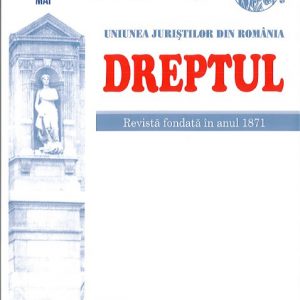 Present in the Romanian Criminal Code (Article 356), with ancient tradition of incrimination, the contamination of water makes the transition from the offences against public health to those concerning the environmental protection, meaning that, although being, in principle, a hazard offence, it involves an immediate result (harmful nature). This situation creates a series of difficulties in practice, including in terms of evidence, as it arises from the recent case law, a fact that requires a series of clarifications.
Present in the Romanian Criminal Code (Article 356), with ancient tradition of incrimination, the contamination of water makes the transition from the offences against public health to those concerning the environmental protection, meaning that, although being, in principle, a hazard offence, it involves an immediate result (harmful nature). This situation creates a series of difficulties in practice, including in terms of evidence, as it arises from the recent case law, a fact that requires a series of clarifications. -
 The meanings of the principle of proportionality are identified in the case law and in the legal doctrine during the modern and contemporary period, emphasizing the idea of continuity in understanding this principle. The main connotations of this principle, found in the doctrine, are expressed by the ideas of fairness, balance, adequate ratio, reasonableness, equity, but also in logical plan, by the dialectic reasoning of proportionality. The analysis of case law and of doctrine reveals the importance of this principle, whose purpose is to materialize the legal standard, to substantiate the concept of legitimacy in law and to serve as a key criterion that allows the demarcation between the legitimate manifestations of the state power and, on the other hand, the excess of power in the activity of the state authorities. The only regulations of the Romanian Constitution which specifically refer to the principle of proportionality are included in Article 53, with the marginal title „Restriction of the exercise of some rights and freedoms”. In this study, by using different ways of legal interpretation, we also identify other constitutional rules which involve this principle.
The meanings of the principle of proportionality are identified in the case law and in the legal doctrine during the modern and contemporary period, emphasizing the idea of continuity in understanding this principle. The main connotations of this principle, found in the doctrine, are expressed by the ideas of fairness, balance, adequate ratio, reasonableness, equity, but also in logical plan, by the dialectic reasoning of proportionality. The analysis of case law and of doctrine reveals the importance of this principle, whose purpose is to materialize the legal standard, to substantiate the concept of legitimacy in law and to serve as a key criterion that allows the demarcation between the legitimate manifestations of the state power and, on the other hand, the excess of power in the activity of the state authorities. The only regulations of the Romanian Constitution which specifically refer to the principle of proportionality are included in Article 53, with the marginal title „Restriction of the exercise of some rights and freedoms”. In this study, by using different ways of legal interpretation, we also identify other constitutional rules which involve this principle. -
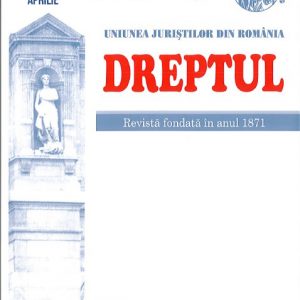 In the same way as the institutional decision-making system of the European Union (the European Commission, the Council, the European Parliament) participating in the unional legislative mechanism (the procedures of adoption of the derived legislation of the European Union) has undergone, in an evolutive sense, permanent changes of reformatory nature, in favour of some elements specific to bicameralism (the Council – the European Parliament; the European Parliament – the Council), within the institutions that make up the jurisdictional system of the European Union we are also witnessing the same permanence of the concerns for institutional reform placed in the structural-organizational plan, but also in the one of the competences ratione materiae, ratione personae. All these occurred and still occur in close relation to the process of enlargement of the European Union, as well as to the multiplication of the areas which fall under the exclusive competences of the European Union and of those shared between the European Union and the Member States, correlated with the principles of subsidiarity, proportionality, conferral and loyal cooperation.
In the same way as the institutional decision-making system of the European Union (the European Commission, the Council, the European Parliament) participating in the unional legislative mechanism (the procedures of adoption of the derived legislation of the European Union) has undergone, in an evolutive sense, permanent changes of reformatory nature, in favour of some elements specific to bicameralism (the Council – the European Parliament; the European Parliament – the Council), within the institutions that make up the jurisdictional system of the European Union we are also witnessing the same permanence of the concerns for institutional reform placed in the structural-organizational plan, but also in the one of the competences ratione materiae, ratione personae. All these occurred and still occur in close relation to the process of enlargement of the European Union, as well as to the multiplication of the areas which fall under the exclusive competences of the European Union and of those shared between the European Union and the Member States, correlated with the principles of subsidiarity, proportionality, conferral and loyal cooperation. -
 In the regulation of the new Criminal Procedure Code the recourse in cassation is an extraordinary legal remedy exercised only in cases expressly provided by law and only on grounds of unlawfulness. The recourse in cassation is the extraordinary remedy through which the interested parties or the prosecutor may request the High Court, in the conditions and for the reasons expressly and limitatively provided by law, to reform the final judgements in certain cases provided by law. Practically, the recourse in cassation is designed as an extraordinary legal remedy or otherwise, as a last level of jurisdiction within which the parties can defend their rights, by removing the effects of the final judgments pronounced under the conditions of the five cases of unlawfulness provided by Article 438 of the Criminal Procedure Code and does not involve the examination of all aspects of the case, but only the review of the legality of the contested judgment, respectively its consistency with the provisions of the applicable substantive and procedural law. We intend to present the five cases of recourse in cassation by an extensive examination of the doctrine and practice of the High Court of Cassation and Justice.
In the regulation of the new Criminal Procedure Code the recourse in cassation is an extraordinary legal remedy exercised only in cases expressly provided by law and only on grounds of unlawfulness. The recourse in cassation is the extraordinary remedy through which the interested parties or the prosecutor may request the High Court, in the conditions and for the reasons expressly and limitatively provided by law, to reform the final judgements in certain cases provided by law. Practically, the recourse in cassation is designed as an extraordinary legal remedy or otherwise, as a last level of jurisdiction within which the parties can defend their rights, by removing the effects of the final judgments pronounced under the conditions of the five cases of unlawfulness provided by Article 438 of the Criminal Procedure Code and does not involve the examination of all aspects of the case, but only the review of the legality of the contested judgment, respectively its consistency with the provisions of the applicable substantive and procedural law. We intend to present the five cases of recourse in cassation by an extensive examination of the doctrine and practice of the High Court of Cassation and Justice. -
 The law has, undoubtedly, the properties of a fluid. Firstly, the property to shape into the forms they come into contact: the social realities are the ones that should configure it, as François Gény once said, so that their slower or more sudden changing would automatically determine mostly imperceptible, and in some cases, convulsive changes of the legal phenomenon as well. Law is a far too important phenomenon to not be subjected to studying day by day. However, a careful analysis of law has always imposed its division, primarily for teaching, theoretical purposes, but not without having in view the practical consequences as well. Traditional or innovative, classic or revolutionary, this „slicing” into divisions, branches and legal institutions, has undergone, in its turn, plenty of changes over time, being in a state of perpetual remodeling (and remodulation). In the following lines we propose some ideas, with no greater claim than that of presenting a personal opinion, about this phenomenon of division, firstly, and of fusion, secondly, a phenomenon that repeats itself cyclically, as, ultimately, the law also contains in itself a significant dose of history.
The law has, undoubtedly, the properties of a fluid. Firstly, the property to shape into the forms they come into contact: the social realities are the ones that should configure it, as François Gény once said, so that their slower or more sudden changing would automatically determine mostly imperceptible, and in some cases, convulsive changes of the legal phenomenon as well. Law is a far too important phenomenon to not be subjected to studying day by day. However, a careful analysis of law has always imposed its division, primarily for teaching, theoretical purposes, but not without having in view the practical consequences as well. Traditional or innovative, classic or revolutionary, this „slicing” into divisions, branches and legal institutions, has undergone, in its turn, plenty of changes over time, being in a state of perpetual remodeling (and remodulation). In the following lines we propose some ideas, with no greater claim than that of presenting a personal opinion, about this phenomenon of division, firstly, and of fusion, secondly, a phenomenon that repeats itself cyclically, as, ultimately, the law also contains in itself a significant dose of history. -
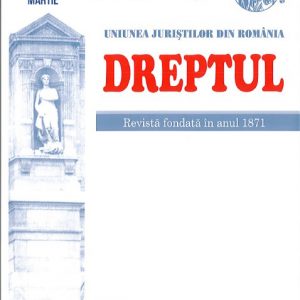 The field of contractual freedom has raised a permanent interest and continues to cause numerous discussions in the doctrine, and the practice of the courts emphasizes the importance of applying this principle to the specific civil legal relations. The undeniable importance of the contract as source of law involves inclusively the investigation of the manner in which the good faith and the abuse of right influence not only the formation, but also the performance or cessation of the contractual legal relations.
The field of contractual freedom has raised a permanent interest and continues to cause numerous discussions in the doctrine, and the practice of the courts emphasizes the importance of applying this principle to the specific civil legal relations. The undeniable importance of the contract as source of law involves inclusively the investigation of the manner in which the good faith and the abuse of right influence not only the formation, but also the performance or cessation of the contractual legal relations. -
 The objective of this short study is to answer a question: is there today a „contraventional law”, as a result of the fragmentation of the administrative law? Assuming the answer is affirmative, we must establish whether the contraventional law itself faces today a process of fragmentation, i.e. if we can talk, for example, about a road contraventional law, a contraventional law of competition, a fiscal contraventional law, etc.
The objective of this short study is to answer a question: is there today a „contraventional law”, as a result of the fragmentation of the administrative law? Assuming the answer is affirmative, we must establish whether the contraventional law itself faces today a process of fragmentation, i.e. if we can talk, for example, about a road contraventional law, a contraventional law of competition, a fiscal contraventional law, etc. -
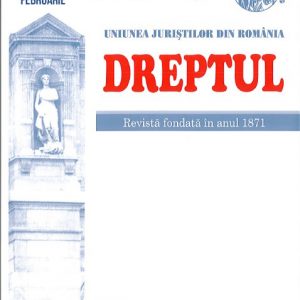 Prin Rechizitoriul din data de 18 octombrie 2013, procurorul din cadrul Parchetului de pe lângă Înalta Curte de Casație și Justiție – Secția de Combatere a Infracțiunilor Conexe Infracțiunilor de Corupție a dispus trimiterea în judecată a inculpaților: M.J. pentru săvârșirea infracțiunii prevăzute și pedepsite de art. 132 din Legea nr. 78/2000 raportat la art. 248 C.pen. 1969, P.C. pentru complicitate la săvârșirea infracțiunii prevăzute și pedepsite de art. 132 din Legea nr. 78/2000 raportat la art. 248 C.pen. 1969 și Z.P. pentru complicitate la săvârșirea infracțiunii prevăzute și pedepsite de art. 132 din Legea nr. 78/2000 raportat la art. 248 C.pen. 1969.
Prin Rechizitoriul din data de 18 octombrie 2013, procurorul din cadrul Parchetului de pe lângă Înalta Curte de Casație și Justiție – Secția de Combatere a Infracțiunilor Conexe Infracțiunilor de Corupție a dispus trimiterea în judecată a inculpaților: M.J. pentru săvârșirea infracțiunii prevăzute și pedepsite de art. 132 din Legea nr. 78/2000 raportat la art. 248 C.pen. 1969, P.C. pentru complicitate la săvârșirea infracțiunii prevăzute și pedepsite de art. 132 din Legea nr. 78/2000 raportat la art. 248 C.pen. 1969 și Z.P. pentru complicitate la săvârșirea infracțiunii prevăzute și pedepsite de art. 132 din Legea nr. 78/2000 raportat la art. 248 C.pen. 1969. -
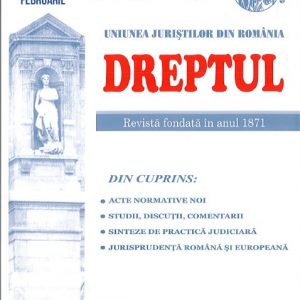 Curtea Constituțională a fost sesizată cu excepția de neconstituționalitate ridicată de un număr mare de funcționari publici trimiși în judecată pentru săvârșirea infracțiunii de abuz în serviciu, care a fost reglementată de art. 246 din Codul penal din 19691, având conținutul „Fapta funcționarului public, care, în exercițiul atribuțiilor de serviciu, cu știință, nu îndeplinește un act ori îl îndeplinește în mod defectuos și prin aceasta cauzează o vătămare intereselor legale ale unei persoane se pedepsește cu închisoare de la 6 luni la 3 ani”, precum și de art. 297 alin. (1) din Codul penal în vigoare, adoptat în anul 2009, potrivit căruia „Fapta funcționarului public care, în exercitarea atribuțiilor de serviciu, nu îndeplinește un act sau îl îndeplinește în mod defectuos și prin aceasta cauzează o pagubă ori o vătămare a drepturilor sau intereselor legitime ale unei persoane fizice sau ale unei persoane juridice se pedepsește cu închisoare de la 2 la 7 ani și interzicerea exercitării dreptului de a ocupa o funcție publică.”
Curtea Constituțională a fost sesizată cu excepția de neconstituționalitate ridicată de un număr mare de funcționari publici trimiși în judecată pentru săvârșirea infracțiunii de abuz în serviciu, care a fost reglementată de art. 246 din Codul penal din 19691, având conținutul „Fapta funcționarului public, care, în exercițiul atribuțiilor de serviciu, cu știință, nu îndeplinește un act ori îl îndeplinește în mod defectuos și prin aceasta cauzează o vătămare intereselor legale ale unei persoane se pedepsește cu închisoare de la 6 luni la 3 ani”, precum și de art. 297 alin. (1) din Codul penal în vigoare, adoptat în anul 2009, potrivit căruia „Fapta funcționarului public care, în exercitarea atribuțiilor de serviciu, nu îndeplinește un act sau îl îndeplinește în mod defectuos și prin aceasta cauzează o pagubă ori o vătămare a drepturilor sau intereselor legitime ale unei persoane fizice sau ale unei persoane juridice se pedepsește cu închisoare de la 2 la 7 ani și interzicerea exercitării dreptului de a ocupa o funcție publică.”
